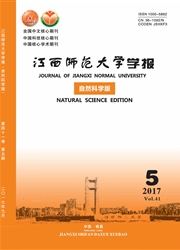

 中文摘要:
中文摘要:
采用4周棕色挪威大鼠,随机分为 PBS对照组、OVA致敏模型组和益生菌治疗组,检测血清中OVA特异性IgE水平,采用HE染色和甲苯胺蓝染色观察肠道炎症水平以及腹腔肥大细胞变化,用电镜观察肠道超微结构组织形态的变化,建立大鼠食物肠道过敏模型,以研究口服益生菌对食物过敏大鼠肠道的免疫变化以及病理变化。研究结果表明:通过口服益生菌治疗,小鼠血清中特异性IgE水平降低,腹腔肥大细胞减少,肠道黏膜结构破坏减轻。采用口服益生菌疗法对大鼠食物过敏性肠道疾病有一定的治疗效果,对食物过敏性肠道疾病的预防治疗提供了一条新途径。
 英文摘要:
英文摘要:
To establish rat intestinal allergy model. Then the model was treated by taking probiotics and the effect had be observed. 35 Brown-Norway rats were randomly divided into 3 groups:PBS control group,OVA group,probi-otics group. Blood of rats was collected to detect serum OVA specificity IgE and OVA specificity IgG. The pathologi-cal changes of the lung tissue and the intestinal mucosa mast cells were observed by HE staining and Toluidine blue Benzen esulfonic acid( TB)stain,respectively. Morphologic changes of intestinal mucosa ultra-structure of the mice were observed by electron-microscope. The levels of OVA specific IgE and IgG decreased sharply in mice treated with probiotics. The degranulated mast cells decreased statistically and the damage of intestinal mucosa alleviated. Probiotics can be used to treat the intestinal allergy mice effectively,which will offer a new therapeutic regimen for peanut allergic gastroenteritis.
 同期刊论文项目
同期刊论文项目
 同项目期刊论文
同项目期刊论文
 期刊信息
期刊信息
